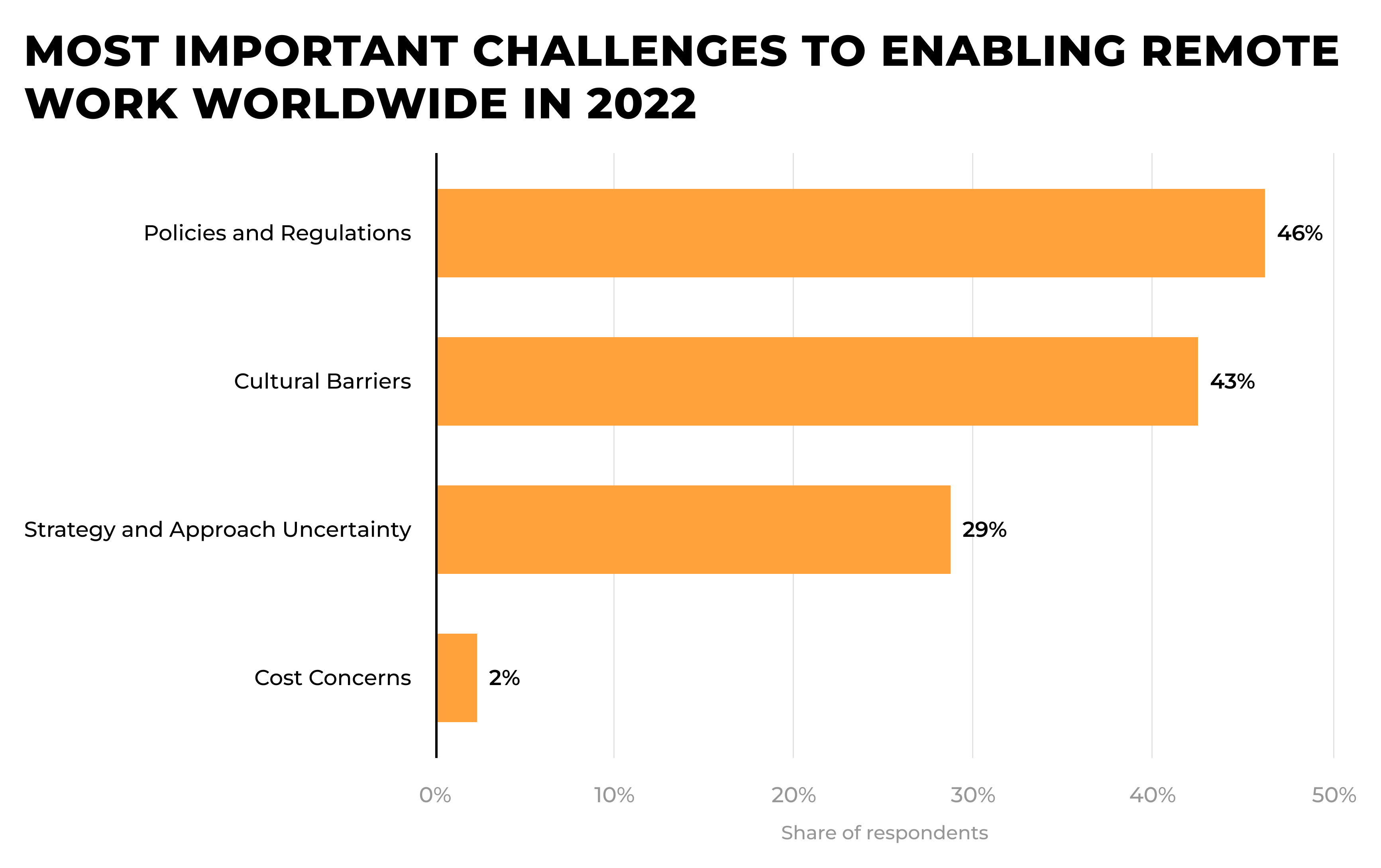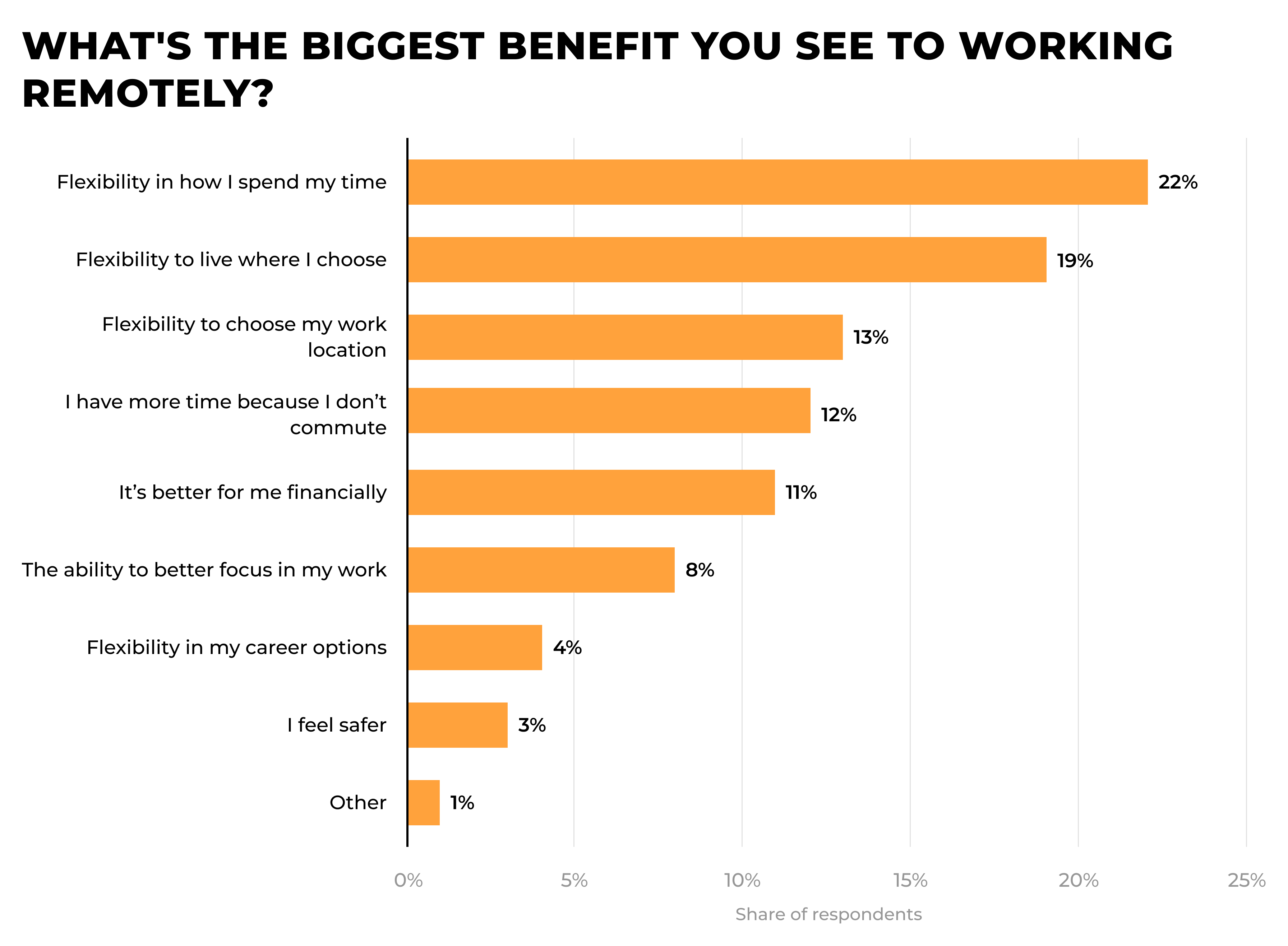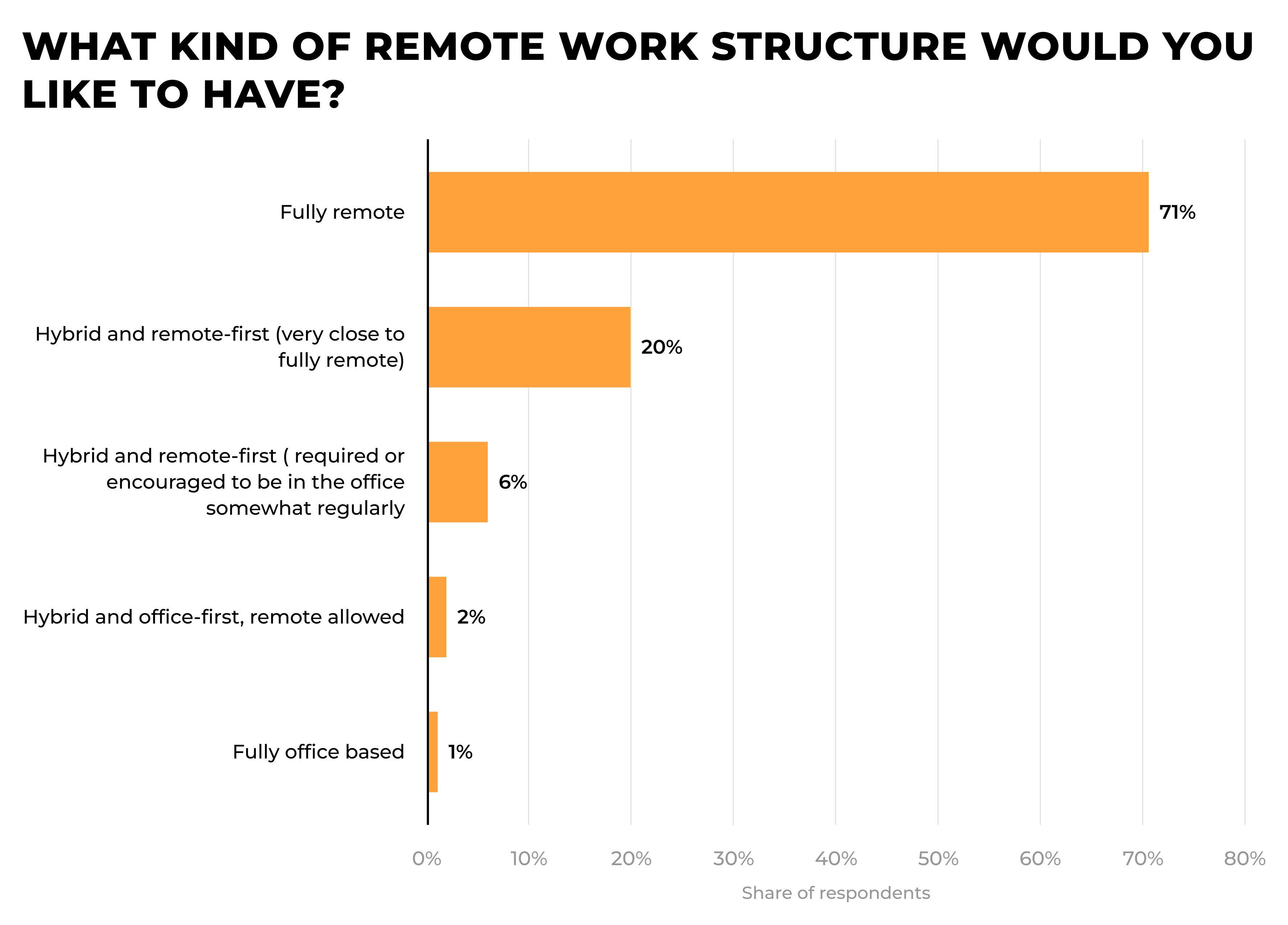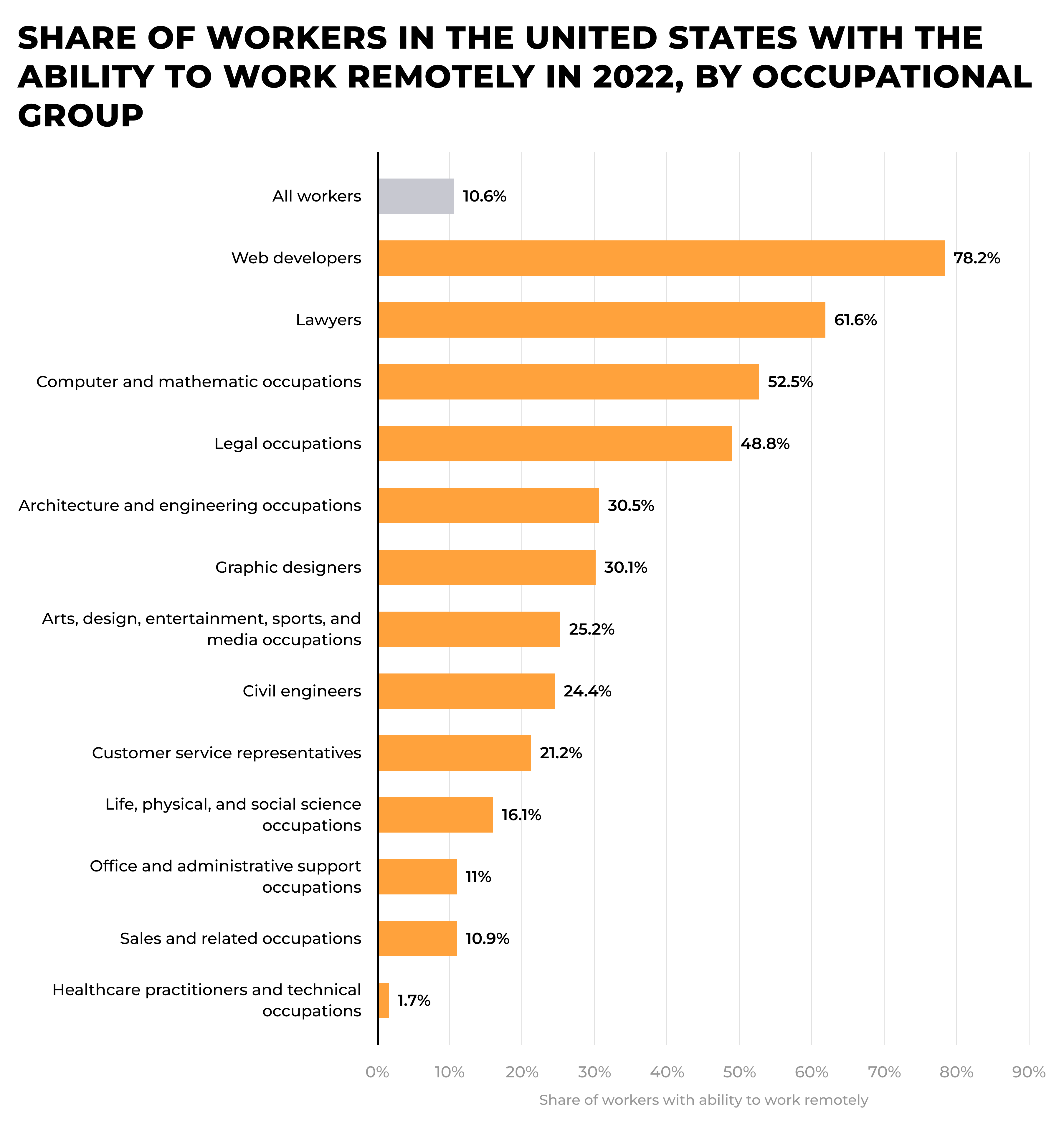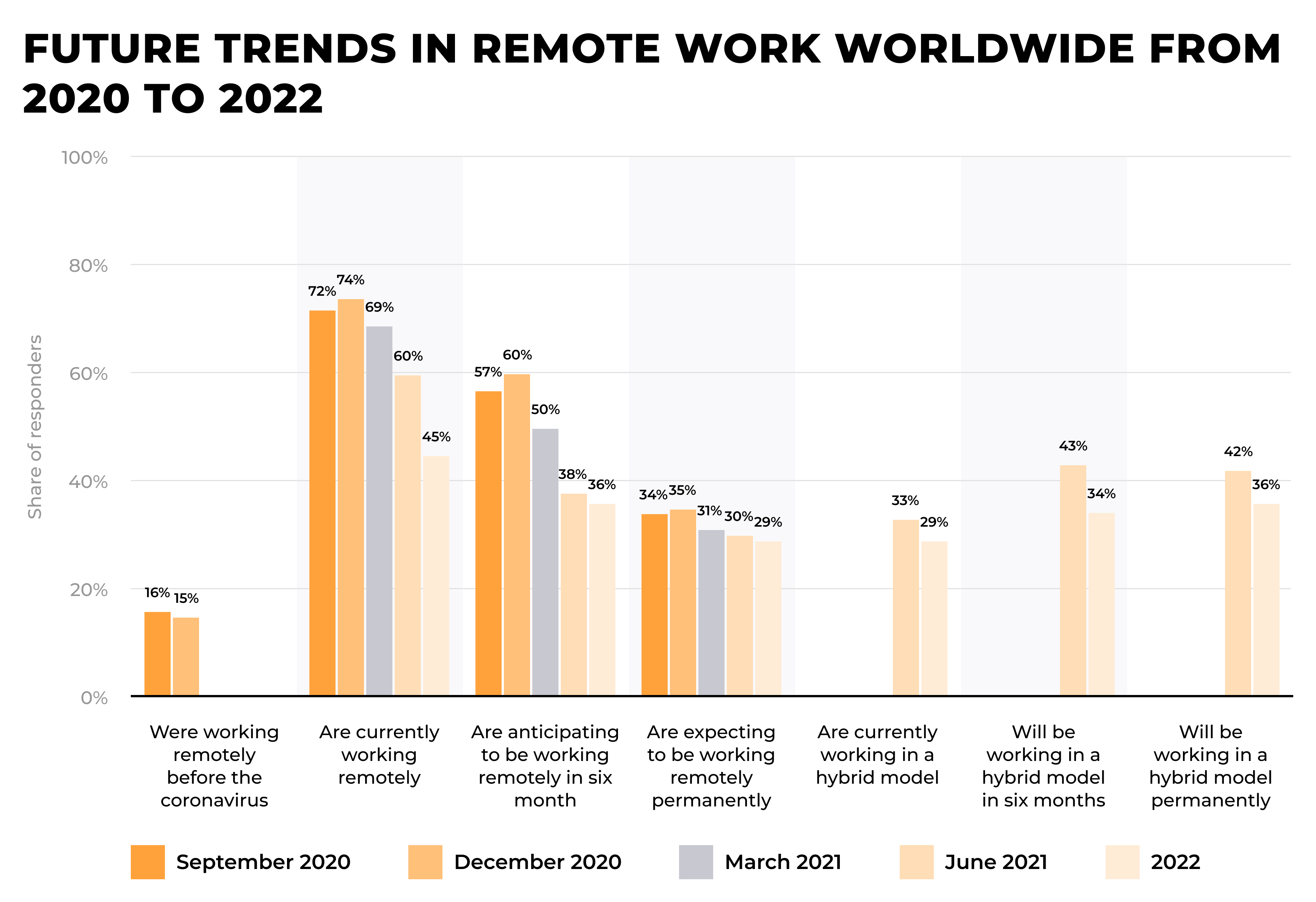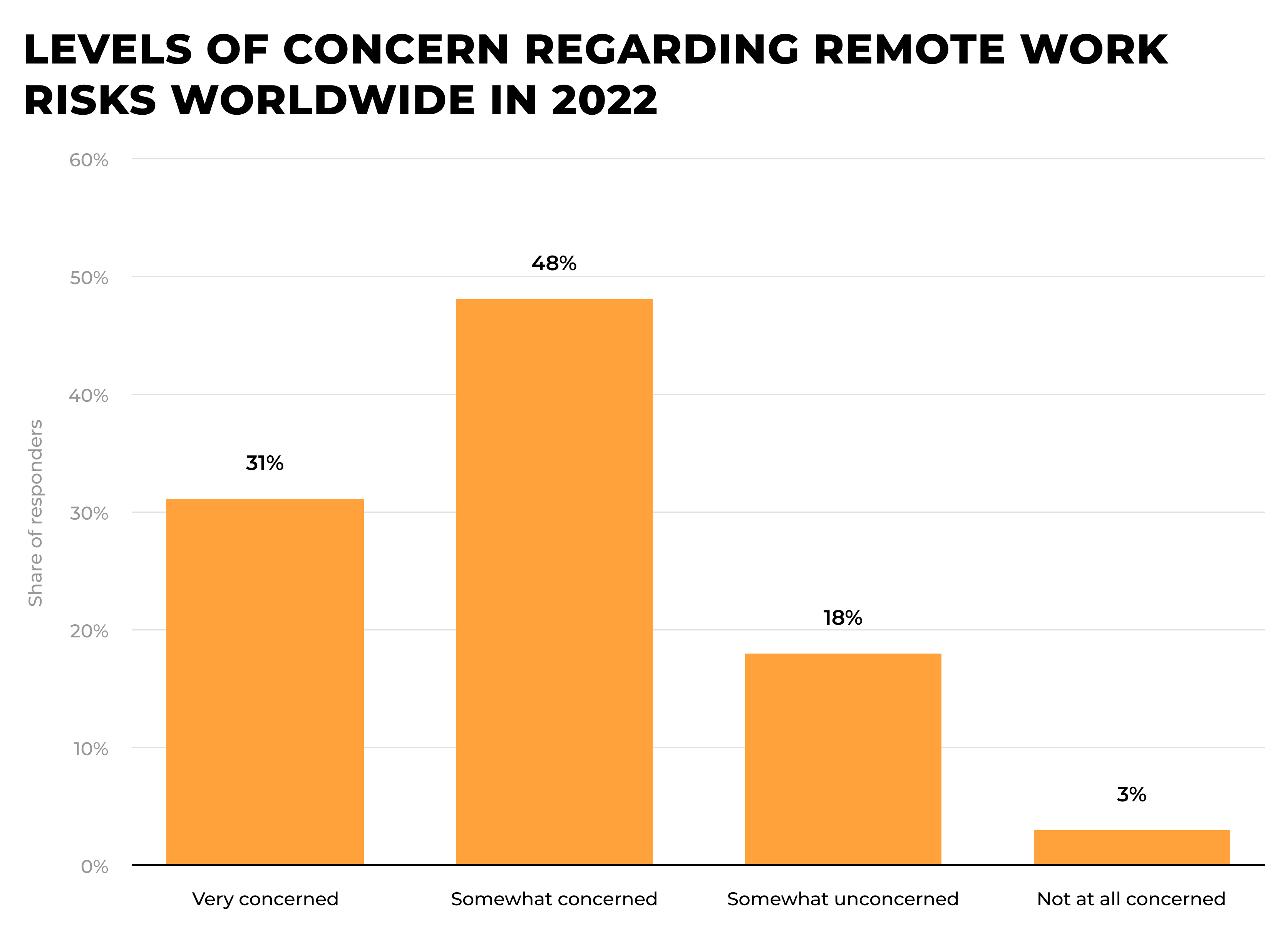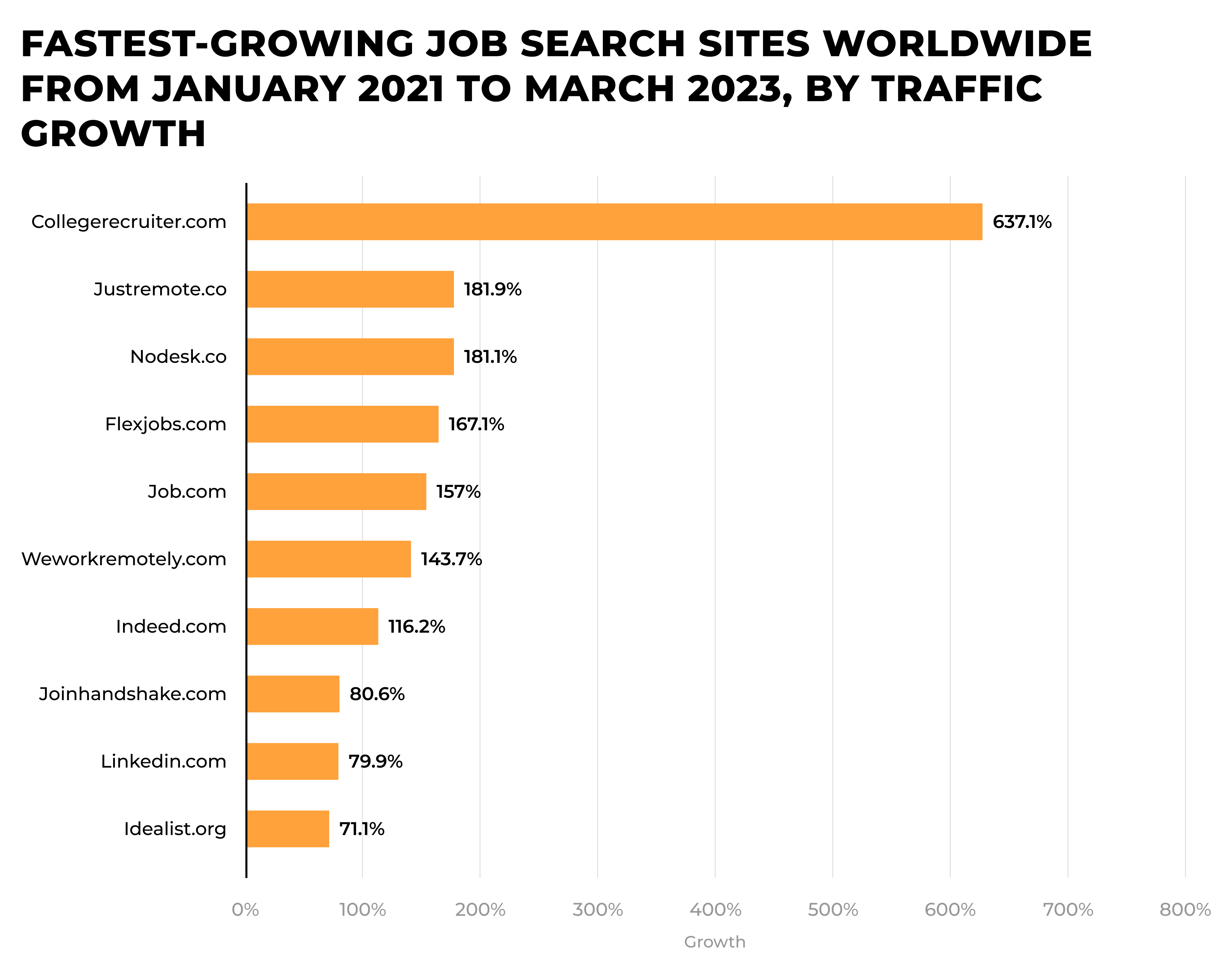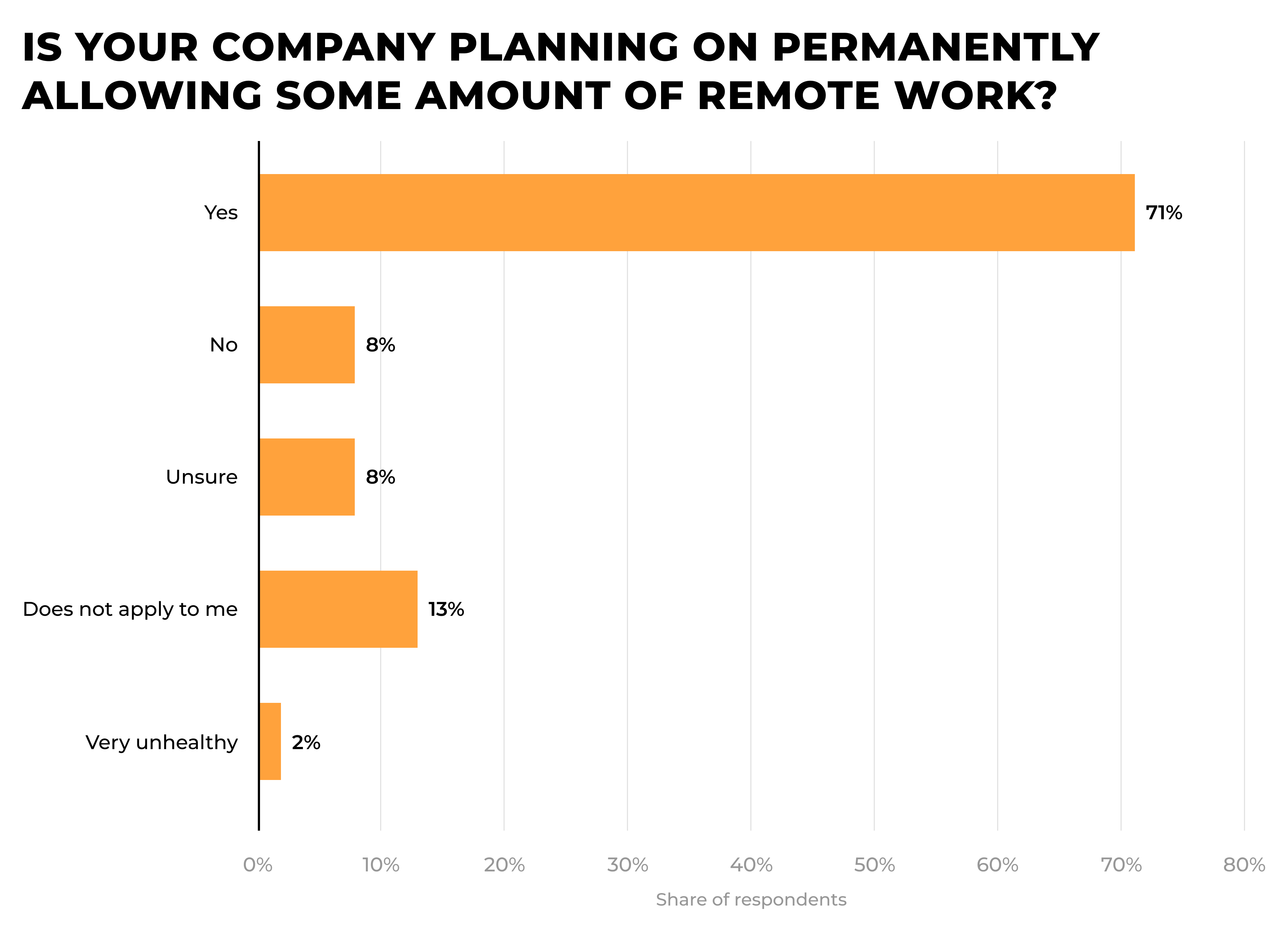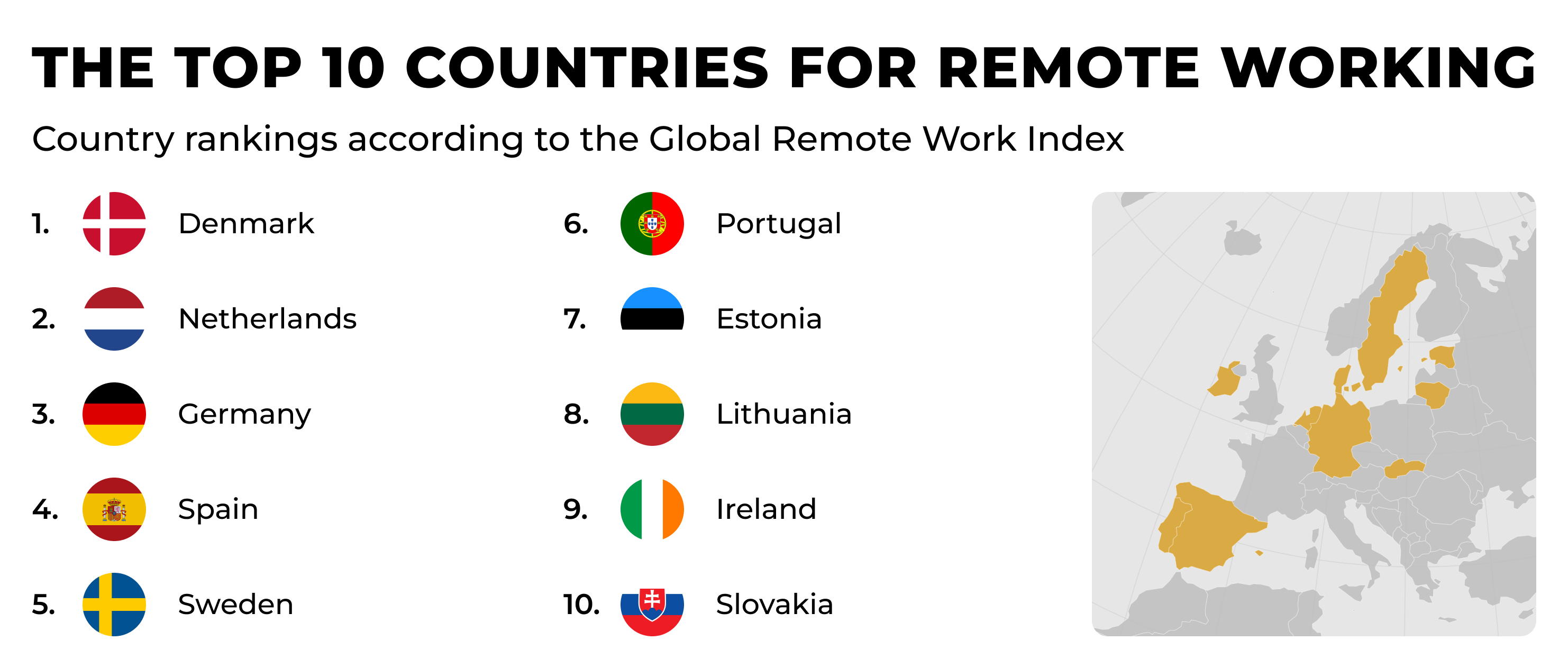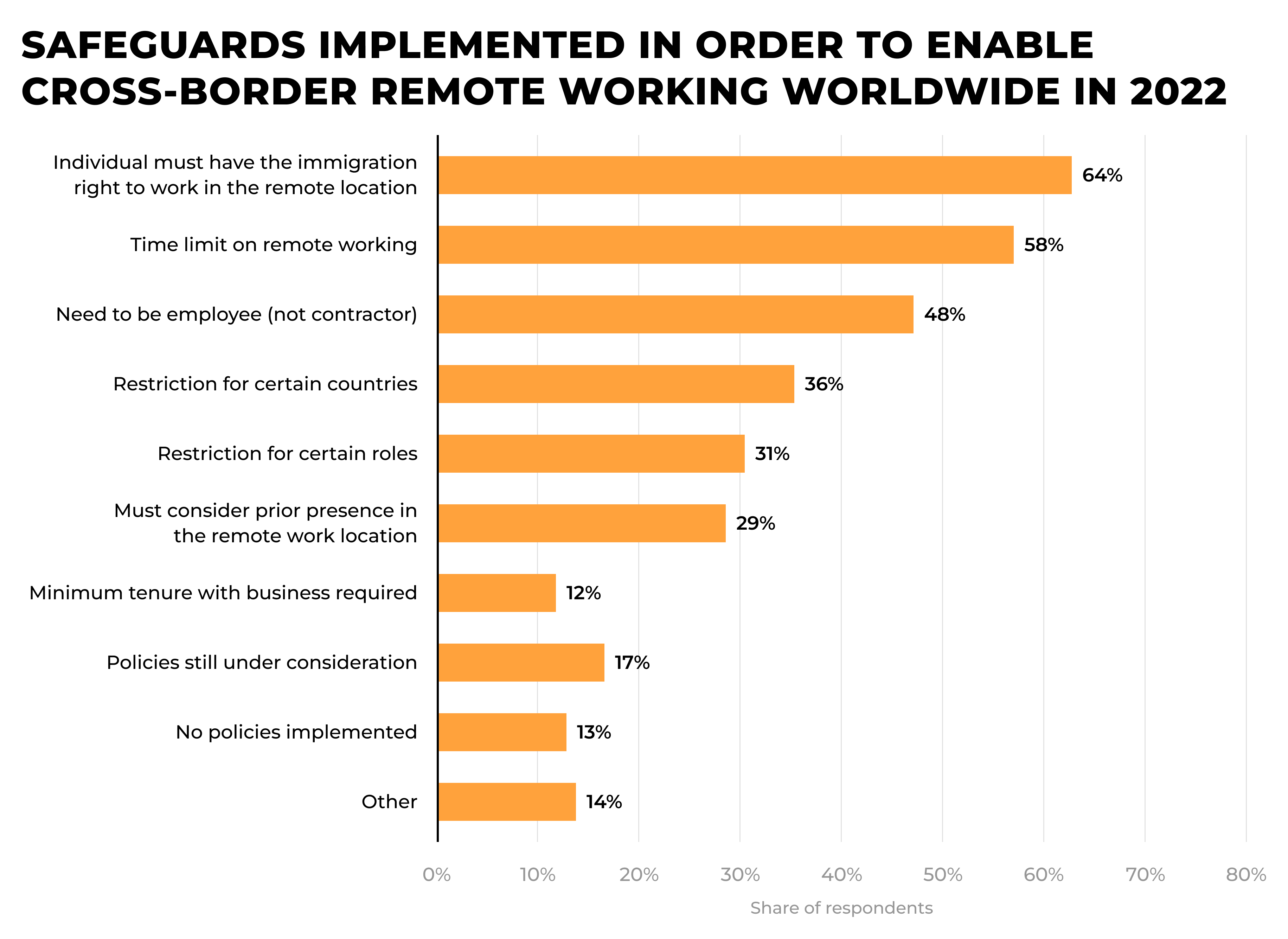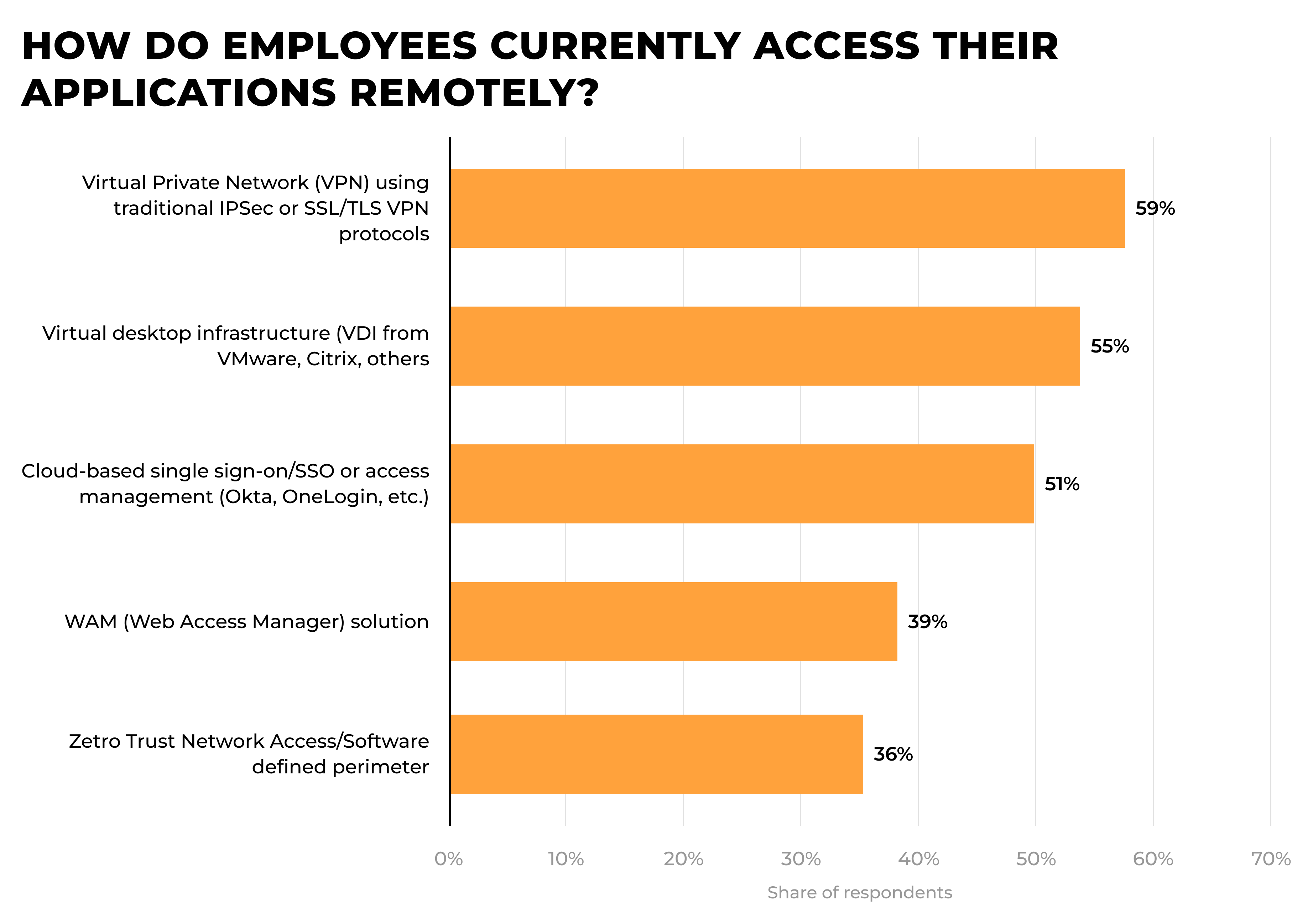
Over 45 Remote Work Statistics and Trends
Since COVID-19, one of the worst pandemics in history, there has been a significant increase in the amount of people working remotely. Many companies have transitioned to remote or hybrid models as a necessity, and this trend has even continued post-pandemic due to the benefits it offers.
A large percentage of the workforce has expressed a preference for remote work. Surveys have shown that employees value flexibility and balance between work and life. We've compiled several key remote work statistics that might be helpful for both employees and their employers.
The Most Important Challenges to Remote Work Worldwide in 2022
While remote work has become quite popular, there are still a few significant difficulties that come with this option, especially in terms of regulations, culture, and strategy. Let’s take a look at what challenges were significant in the eyes of employees and companies back in 2020. Respondents had the option to select one or more responses in the questionnaire.
Policies and Regulations - 46%
The greatest percentage of the respondents have found that dealing with laws and company rules surrounding remote work to be the most challenging issue. Companies must ensure compliance with labor laws, data protection regulations, and industry-specific standards. This can be particularly difficult when managing a geographically diverse workforce.
Cultural Barriers - 43%
A similar number of individuals also struggle with issues like teamwork and communication in a remote setting. Traditional office-based work environments have established norms and practices in business communication. However, these may not translate well to remote settings.
Strategy and Approach Uncertainty - 29%
About a third of respondents expressed that they are unsure about how to best implement remote work. Many companies may lack a clear roadmap when it comes to the transition from office-based to remote work.
Cost Concerns - 2% The least significant issue for companies is the cost of implementing remote work policies. This might be the case because the amount of money spent on technology might be balanced out by savings in other areas, like lower office utility expenses.
The Greatest Benefits of Working Remotely
The advantages of remote work are clear and varied. Here are the main ones:
Flexibility in how I spend my time - 22% Almost a quarter of respondents state that remote work gives them the flexibility to manage their time more favorably. This allows for a more personalized work schedule that can adapt to various individual needs and preferences.
Flexibility to live where I choose - 19%
Remote work by definition offers the flexibility to choose a living location. Around one fifth of people value the freedom from being bound to an office. This number highlights the importance of geographical freedom.
I don’t have to commute and have more time thanks to that - 12%
Many respondents highlight the benefit of not having to commute. They point out that remote work saves them time, which can be used for personal activities or additional work. Employers also indicate reduced need for office space.
Working remotely allows workers to focus better - 8%
People suggest that the home environment can be less distracting and more conducive to concentration for some individuals.
Feeling safer working from home - 3% This figure indicates that for the smallest portion of the workforce, remote work provides a greater sense of security.
Preferred Work Structures
Let's explore how people preferred to work in 2022 after experiencing remote work in 2020 due to COVID-19.
Fully remote - 71%
A significant majority prefer a fully remote work structure, showing a strong desire for autonomy.
Hybrid and remote-first - 20%
One fifth of respondents favor a hybrid model. This figure indicates a preference for a balance between remote work benefits and in-person interactions.
Fully Office based - 1%
Only 1% wish to return to a traditional office-based work environment full time. This reflects a minimal desire among most workers to revert to a pre-pandemic working style.
These statistics indicate that most people prefer to work remotely or with a hybrid approach, with very few wanting to go back to a traditional office setup.
Remote Work in the USA by Occupation
In 2022, the ability to work remotely varied significantly across different occupational groups in the United States. Below is a detailed breakdown showcasing the percentage of professionals from various fields who had the opportunity to work remotely during the year 2022.
Web Developers - 78% The largest portion of professionals in this field had the ability to work remotely, highlighting the digital nature of their jobs.
Lawyers - 62%
Lawyers could afford to start working remotely quite easily due to the adaptability of legal work to online environments.
Computer and Mathematical Occupations - 53%
Over half of those in computer- and mathematical-related fields could work from home, indicating the digital compatibility of their tasks.
Architecture and Engineering Occupations - 31%
Architects and engineers had remote work capabilities, but they still had to be physically present in their offices part time.
Healthcare Practitioners 1.7% Only the smallest portion of healthcare practitioners were able to work remotely, due to the hands-on and location-specific nature of healthcare services.
These figures illustrate that technology-oriented and legal professions show higher adaptability, whereas the needs of the healthcare field still remain primarily in-person.
Future Trends and Work Patterns
In a worldwide survey with CIOs, respondents indicated that full-time remote work will probably change to a mix of office and remote work in the future.
Statistics of people working remotely:
In December 2020, 74% of respondents said they were working remotely at this time. This figure was mainly influenced by the pandemic.
By 2022, the percentage of remote workers decreased to 45%. There was a partial return to office work or adoption of hybrid work models.
In December 2020, 60% of companies thought their employees would be working remotely on a permanent basis, and started getting ready for these permanent changes.
In 2022, only 36% of companies expected their employees to work remotely on a permanent basis, indicating a significant shift in long-term work arrangements.
In 2022, 29% of employees were working with a hybrid model. They were blending remote and office work, reflecting the adoption of more flexible work practices. In comparison, this figure was significantly greater in June, 2021(33%).
By 2022, 36% of companies expected a permanent shift to hybrid work models. This figure highlights employees' desire for a balance between remote and office work.
Global research shows that remote work is likely to transition into a more hybrid work approach. Before the pandemic, only 15-16% of companies had remote workers. But by late 2022, stats indicate that most of the companies expect to permanently use some kind of hybrid model, accounting for the evolving work landscape.
Working More or Less before and after COVID?
In this section, we’ll explore studies on workers’ productivity and see changes in their workload this year as compared to the previous year.
Started to work more - The largest number of respondents said they spend more hours completing job-related tasks while working remotely - 44%
Working the same amount - 32%
Started to work less - The lowest amount of respondents - 24%
These statistics reveal a diverse experience among workers. Nearly half observe that their productivity has become worse because of the increase in their workload, while a substantial number see no change or a decrease in their work demands.
Levels of Concern Regarding Remote Work Risks Worldwide in 2022
Let’s take a look at the varying degree of concern among individuals regarding the risks associated with remote work in 2022.
Moderately anxious about the potential pitfalls of working remotely was selected by the majority of respondents - almost 50%
Highly worried about the risks of remote work - 31%
Have no concerns about the dangers of remote work - the lowest number of people - less than 5%
It's clear that security and challenges in remote work environments stay at the forefront of many people’s minds. However, a minimal number of respondents appear to be unconcerned, meaning there are some companies that effectively organize comfortable and confident remote work setups.
Fastest-Growing Job Search Sites Worldwide, by traffic growth
In 2020, thousands of people immediately began searching for remote job opportunities, attracted by the numerous benefits this type of work has to offer. Let’s explore the rapid growth of job search platforms from January 2021 to March 2023.
Justremote.co takes second place among the fastest-growing job search companies, and first place among websites for finding remote job options. It grew by 182%
Flexjobs.com - 167%
Weworkremotely.com is the third fastest-growing job search platform for finding remote job opportunities. However, it’s also not the lowest on the list and has experienced significant growth - 144%
The significant traffic growth of these hiring platforms indicates a widespread shift towards remote work. This means that more and more individuals are seeking out opportunities that offer flexibility and remote capabilities each year.
Is Your Company Planning on Permanently Allowing Some Amount of Remote Work?
Now, we’ll delve into the future plans of companies regarding the adoption of remote work options on a permanent basis.
The majority of respondents’ companies are planning to allow remote work permanently - 71%.
For 13% of respondents, the question of remote work policies is not relevant, possibly due to their self-employment, freelance status, or roles that require physical presence.
The lowest number of respondents’ companies have no plans to continue remote work - 8%. This might be because some reports suggest that employees struggle with not having the right work setup and experience lower productivity.
These figures highlight a strong shift towards flexible work arrangements.
The Best Countries for Remote Work
Here's a brief overview of the top 10 countries where remote work is offered, according to The Global Remote Work Index 2023 by NordLayer:
Denmark: Topped the list for its social inclusiveness, high-quality internet, and strong healthcare system, despite high living costs.
Netherlands: Ranked second, noted for its digital infrastructure and social safety.
Germany: Came in third, particularly recognized for its legal measures on cyber-safety.
Spain
Sweden
Portugal: Highlighted for offering great value for money, balancing a high ranking with a relatively low cost of living.
Estonia
Lithuania
Ireland
Slovakia: Despite being at the bottom of this list, this country still presents substantial opportunities for remote workers, including their fast-growing IT sector, attractive government initiatives, and favorable cost of living.
European countries dominate the top 10, reflecting their strong digital infrastructure and safety measures. These rankings consider many questions, including cyber-safety, economic stability, and digital infrastructure. For those considering moving to another country and working remotely, this list serves as a valuable resource to take into account.
Safeguards Implemented to Enable Cross-Border Remote Working in 2022
To facilitate cross-border remote work capabilities in 2022, companies have introduced several examples of safeguards across the globe:
Workers must have the correct immigration status - A vast majority of companies stated this - 64%
Time restrictions on how long one can work remotely - 58%
The individual needs to be an employee of the company, not a contractor - 48%
Minimum period of employment was required by the smallest percentage of companies - 12%
These measures were taken in order to ensure that remote work across borders is both effective and compliant with legal standards.
Remote Access Solutions
Finally, let’s explore the prevalent methods for remote access to work applications:
Virtual Private Network (VPN) - 59%
VPNs are the most widespread solution and hold the top position on the list because they establish a secure connection over the internet in order to connect with each company's network.
Cloud-based single sign-on or access management - 51%
These systems allow a customer to access multiple applications with one set of login credentials. Their significant adoption rate indicates the growing reliance on cloud services.
Zetro Trust Network Access - 36%
Despite being the least popular option, this service remains viable. Its use indicates that businesses appreciate having control over user access.
These figures illustrate how businesses address the challenges of remote work. It’s clear that most companies have been focusing on the types of software and hardware that balance security with ease of use.
Begin Working Remotely on Your Own
With proper planning and organization, everyone can explore side hustles and start working remotely even now, in 2025, as a means of increasing their income. Selling on Amazon is one of the most popular options, but there are numerous other ways to earn money. Let’s delve into all of these avenues:
1. Selling Products on Amazon: Amazon provides a unique platform for individuals to access a worldwide market. However, due to its competitive nature, selecting profitable products to sell or resell requires careful consideration. Tools like AMZScout’s PRO Extension or Product Database can assist in this process, making it easier and more efficient while reducing the risk of expensive errors.
2. Freelancing: Offer your skills and services on platforms like Upwork or Fiverr. These may include fields like writing, graphic design, web development, or digital marketing.
3. Content Creation: Start a blog, YouTube channel, write news and articles, or create a podcast in a niche you're passionate about. Monetize your content through ads, sponsorships, and merchandise.
4. Affiliate Marketing: Promote products or services through your website or social media, and earn a commission for every sale made through your referral. Amazon is one of the most popular programs you can join, so you may consider this as an option.
5. Online Courses and Tutoring: Create and sell your own courses on platforms like Udemy or Teachable, sharing your expertise with a wider audience. If you're knowledgeable in a particular subject, language or skill, you can teach others online through platforms like Tutor.com or VIPKid.
These options provide flexibility and the potential for substantial income. Select one that matches your skills and interests and gain independence from being tethered to your location.
Conclusion
The remote work revolution has reshaped the global workforce, and has offered unprecedented flexibility and challenges. The insights and statistics provided in this article serve as a valuable guide for both employees and employers alike.
*The source of the data found in this article is Statista
